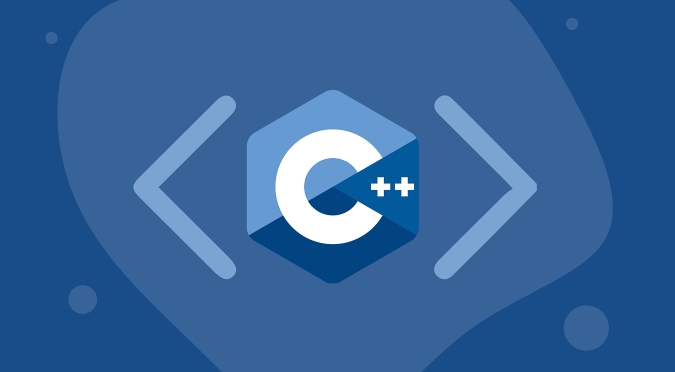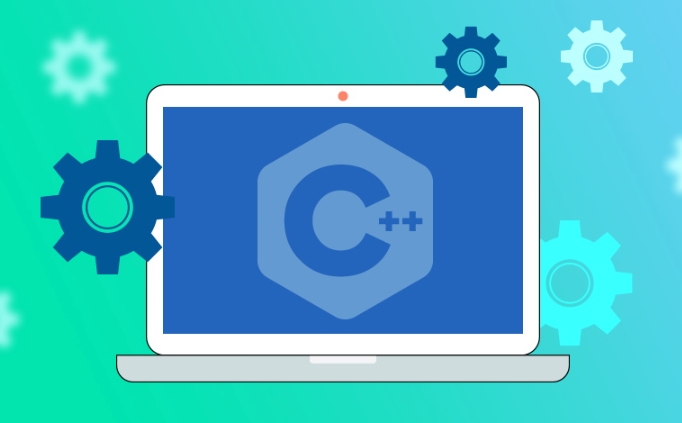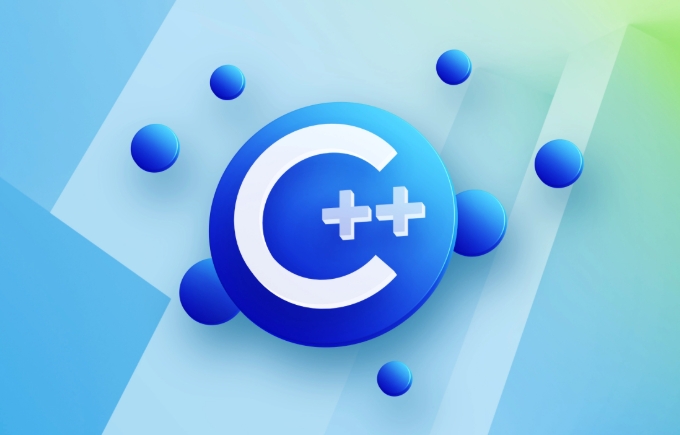The main differences between C and C are design philosophy, memory management, and language features. 1. C is a process-oriented language that emphasizes simplicity and efficiency, while C supports object-oriented programming, and realizes modular development through classes and inheritance; 2. C needs to manually manage memory and use malloc/free, while C provides automatic management resources for constructing destructors and smart pointers; 3. The C standard library is small and focuses on basic operations, while C includes STL template library and algorithms, and supports advanced features such as generic programming and exception handling. These differences make C suitable for underlying system development, and C is more suitable for large applications.

C and C are two of the most influential programming languages in software development, but they serve different purposes and have distinct characteristics. While C builds on C, it introduces a range of new features that change how developers approach problems.

Core Design Philosophy
C is a procedural language designed for system-level programming. It emphasizes simplicity, efficiency, and close-to-hardware operations. Programs in C are structured around functions and procedures, focusing on step-by-step execution. In contrast, C is an extension of C that incorporates object-oriented programming (OOP). This shift allows developers to create complex systems using concepts like classes, inheritance, and polymorphism, enabling more modular and reusable code.
The design difference becomes apparent when structuring larger applications. For example:

- In C, data and functions are separate entities.
- In C , data and behavior can be encapsulated within objects.
This distinction makes C better suited for large-scale applications where maintenance and scalability are cruel.
Memory Management Approaches
Memory handling in C relies heavily on manual control. Developers use functions like malloc and free to manage memory explicitly. This gives fine-grained control but also increases the risk of memory leaks and segmentation faults if not handled carefully.

C retains this low-level access but adds higher-level tools such as constructors, destructors, and smart points ( std::unique_ptr , std::shared_ptr ). These features automatic resource management and reduce common errors. For instance:
- Constructors initialize objects automatically
- Destructors clean up resources when objects go out of scope
- Smart points handle deallocation without requiring explicit calls to
delete
These additions make memory management safer and more manageable in C projects.
Standard Library and Language Features
C has a relatively small standard library focused on basic operations—input/output, string manipulation, math functions, and memory management. Its minimalism contributes to its speed and portability across platforms.
C offers everything from the C standard library plus a much richer set of tools. The C Standard Template Library (STL) includes ready-to-use data structures (like vectors, maps, and lists) and algorithms that simplify development. For example:
-
std::vectorreplaces raw arrays with dynamic sizing -
std::mapprovides associated containers - Algorithms like
std::sorteliminate writing boilerplate code
Additionally, C supports templates for generic programming, exceptions for error handling, and operator overloading for more intuitive syntax—features absent or limited in C.
While both languages share similar syntax and compilation models, their differences shape how programs are built and maintained. Choosing between them often depends on the project's needs: performance-critical systems may favor C, while applications requiring abstraction and modularity lean towards C .
The above is the detailed content of Difference Between C and C. For more information, please follow other related articles on the PHP Chinese website!

Hot AI Tools

Undress AI Tool
Undress images for free

Undresser.AI Undress
AI-powered app for creating realistic nude photos

AI Clothes Remover
Online AI tool for removing clothes from photos.

Clothoff.io
AI clothes remover

Video Face Swap
Swap faces in any video effortlessly with our completely free AI face swap tool!

Hot Article

Hot Tools

Notepad++7.3.1
Easy-to-use and free code editor

SublimeText3 Chinese version
Chinese version, very easy to use

Zend Studio 13.0.1
Powerful PHP integrated development environment

Dreamweaver CS6
Visual web development tools

SublimeText3 Mac version
God-level code editing software (SublimeText3)
 VSCode settings.json location
Aug 01, 2025 am 06:12 AM
VSCode settings.json location
Aug 01, 2025 am 06:12 AM
The settings.json file is located in the user-level or workspace-level path and is used to customize VSCode settings. 1. User-level path: Windows is C:\Users\\AppData\Roaming\Code\User\settings.json, macOS is /Users//Library/ApplicationSupport/Code/User/settings.json, Linux is /home//.config/Code/User/settings.json; 2. Workspace-level path: .vscode/settings in the project root directory
 How to handle transactions in Java with JDBC?
Aug 02, 2025 pm 12:29 PM
How to handle transactions in Java with JDBC?
Aug 02, 2025 pm 12:29 PM
To correctly handle JDBC transactions, you must first turn off the automatic commit mode, then perform multiple operations, and finally commit or rollback according to the results; 1. Call conn.setAutoCommit(false) to start the transaction; 2. Execute multiple SQL operations, such as INSERT and UPDATE; 3. Call conn.commit() if all operations are successful, and call conn.rollback() if an exception occurs to ensure data consistency; at the same time, try-with-resources should be used to manage resources, properly handle exceptions and close connections to avoid connection leakage; in addition, it is recommended to use connection pools and set save points to achieve partial rollback, and keep transactions as short as possible to improve performance.
 Mastering Dependency Injection in Java with Spring and Guice
Aug 01, 2025 am 05:53 AM
Mastering Dependency Injection in Java with Spring and Guice
Aug 01, 2025 am 05:53 AM
DependencyInjection(DI)isadesignpatternwhereobjectsreceivedependenciesexternally,promotingloosecouplingandeasiertestingthroughconstructor,setter,orfieldinjection.2.SpringFrameworkusesannotationslike@Component,@Service,and@AutowiredwithJava-basedconfi
 python itertools combinations example
Jul 31, 2025 am 09:53 AM
python itertools combinations example
Jul 31, 2025 am 09:53 AM
itertools.combinations is used to generate all non-repetitive combinations (order irrelevant) that selects a specified number of elements from the iterable object. Its usage includes: 1. Select 2 element combinations from the list, such as ('A','B'), ('A','C'), etc., to avoid repeated order; 2. Take 3 character combinations of strings, such as "abc" and "abd", which are suitable for subsequence generation; 3. Find the combinations where the sum of two numbers is equal to the target value, such as 1 5=6, simplify the double loop logic; the difference between combinations and arrangement lies in whether the order is important, combinations regard AB and BA as the same, while permutations are regarded as different;
 Troubleshooting Common Java `OutOfMemoryError` Scenarios
Jul 31, 2025 am 09:07 AM
Troubleshooting Common Java `OutOfMemoryError` Scenarios
Jul 31, 2025 am 09:07 AM
java.lang.OutOfMemoryError: Javaheapspace indicates insufficient heap memory, and needs to check the processing of large objects, memory leaks and heap settings, and locate and optimize the code through the heap dump analysis tool; 2. Metaspace errors are common in dynamic class generation or hot deployment due to excessive class metadata, and MaxMetaspaceSize should be restricted and class loading should be optimized; 3. Unabletocreatenewnativethread due to exhausting system thread resources, it is necessary to check the number of threads, use thread pools, and adjust the stack size; 4. GCoverheadlimitexceeded means that GC is frequent but has less recycling, and GC logs should be analyzed and optimized.
 python pytest fixture example
Jul 31, 2025 am 09:35 AM
python pytest fixture example
Jul 31, 2025 am 09:35 AM
fixture is a function used to provide preset environment or data for tests. 1. Use the @pytest.fixture decorator to define fixture; 2. Inject fixture in parameter form in the test function; 3. Execute setup before yield, and then teardown; 4. Control scope through scope parameters, such as function, module, etc.; 5. Place the shared fixture in conftest.py to achieve cross-file sharing, thereby improving the maintainability and reusability of tests.
 Python for Data Engineering ETL
Aug 02, 2025 am 08:48 AM
Python for Data Engineering ETL
Aug 02, 2025 am 08:48 AM
Python is an efficient tool to implement ETL processes. 1. Data extraction: Data can be extracted from databases, APIs, files and other sources through pandas, sqlalchemy, requests and other libraries; 2. Data conversion: Use pandas for cleaning, type conversion, association, aggregation and other operations to ensure data quality and optimize performance; 3. Data loading: Use pandas' to_sql method or cloud platform SDK to write data to the target system, pay attention to writing methods and batch processing; 4. Tool recommendations: Airflow, Dagster, Prefect are used for process scheduling and management, combining log alarms and virtual environments to improve stability and maintainability.
 How to work with Calendar in Java?
Aug 02, 2025 am 02:38 AM
How to work with Calendar in Java?
Aug 02, 2025 am 02:38 AM
Use classes in the java.time package to replace the old Date and Calendar classes; 2. Get the current date and time through LocalDate, LocalDateTime and LocalTime; 3. Create a specific date and time using the of() method; 4. Use the plus/minus method to immutably increase and decrease the time; 5. Use ZonedDateTime and ZoneId to process the time zone; 6. Format and parse date strings through DateTimeFormatter; 7. Use Instant to be compatible with the old date types when necessary; date processing in modern Java should give priority to using java.timeAPI, which provides clear, immutable and linear






